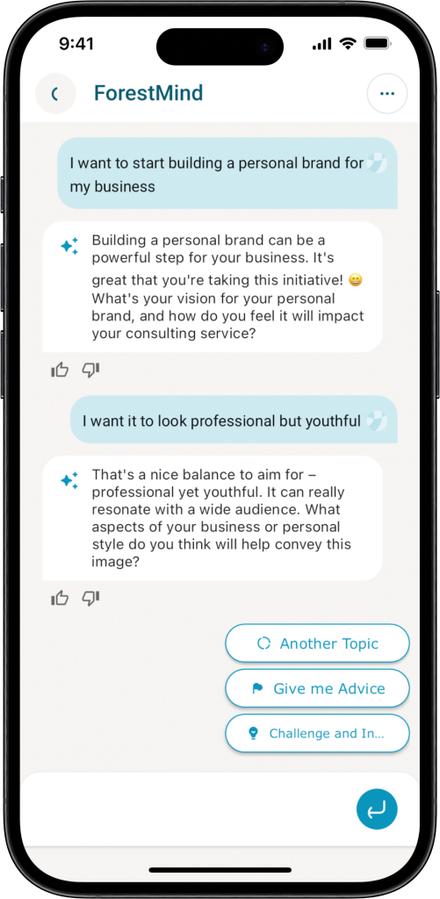
Ghosting and Avoidant Behaviour: Why We Pull Away and 3 Ways to Heal from It
Have you ever experienced ghosting? The two of you were chatting happily the night before, and the next day the person suddenly disappears, never replying again?
Productivity tips from psychology about how to stay motivated, which have helped me achieve goals as a startup founder.

Sometimes just we feel like doing nothing, even though we know we should be productive to achieve goals like working out or reading a book. We have no idea about how to stay motivated or take action. Now and then, life or work can hit us with so much all at once, and it feels super hard to handle all the different things we need to do—one after the other, each one seeming more boring than the last. This happens to a lot of us. Today, I want to share with you some productivity tips from psychology about how to stay motivated, which have helped me achieve goals as a startup founder.
The first thing we need to consider is how we can boost our productivity, which essentially means making a firm decision to take action. Psychologists Chip Heath and Dan Heath have a famous saying that I find particularly insightful: "What looks like resistance is often a lack of clarity" (Heath, & Heath, 2011, p.17). This means that what often appears to be an obstacle is actually due to our failure to define the task at hand enough. The implication here is that if we want to ensure we complete a task, we need to set very clear and precise goals for ourselves. This is the first key to enhancing productivity.
For example, if I tell myself I want to start exercising more, it's not enough to just say "I want to get fit." You must set clear definitions for yourself to know what truly constitutes exercising your body. For instance, you might decide to run for twenty minutes a day and do fifty push-ups. Otherwise, it's all too easy for our natural laziness to take over. You might set ambitious goals but then go for a run and come back home to rest after just two laps. So, if you want to boost your productivity and overcome procrastination, define the goals you want to achieve very clearly.
When you feel overwhelmed with tasks, try to use a checklist. I have a personal habit that when the workload is particularly heavy, the first thing I do when I return to the office is not to dive straight into work. Instead, I take about five to ten minutes to write down the tasks I need to complete that day on my iPad. The advantage of having a clear checklist in front of you is that it helps you better allocate time between different tasks. The key here is that by having a checklist, or a specific plan about what you need to accomplish for the day, you naturally become better at allocating the necessary resources for each task (Masicampo & Baumeister, 2011).
This is preferable to burying yourself in work and jumping into one task after another, which can lead to neglecting other tasks and causing a situation where one thing is done at the expense of another. When you write down very challenging tasks and clearly outline what you need to do, you'll find that your mental stress can be significantly reduced. So, the second technique is to use a checklist.
The third technique is to harness social pressure if you truly want to commit to doing something. According to the book "Influence," one of the most powerful psychological factors that can make people say "yes" is the principle of consistency and commitment (Cialdini, 2008). This means that once we commit, we have a strong motivation to maintain our image as consistent.
If you want to push yourself to do something, consider publicly announcing your goals to friends or telling colleagues what you will deliver by a certain time. You'll find that making this commitment can enhance your willpower and drive you to achieve your goals.
How do we sustain long-term motivation? One method is to define the results very clearly and set an outcome you want to achieve. Consider what your life would look like after you've accomplished what you set out to do. For instance, one question you might ask yourself is: If every aspect of your life were to develop superbly, what would your life look like in five years? What job would you be doing? What would your relationships with peers be like?
First, we set a goal, and then we work backwards to determine the steps needed to achieve it. This often boosts our motivation because, although we know that certain things are good for us—like exercise and reading—and we all acknowledge their benefits, we often lack motivation when we can't visualize the outcome.
By creating a detailed and compelling vision of the future, we can inspire ourselves to take the necessary actions to chase our dreams. This visualization serves as a constant reminder of where we're headed, making the daily tasks and challenges more manageable (Blankert & Hamstra, 2017).
To enhance motivation towards achieving our goals, the "Divide and Conquer" technique is invaluable, which involves breaking down a large goal into smaller, manageable objectives (Morera & Budescu, 1998) . This approach is underpinned by the psychological 'elephant and rider' model, where the 'elephant' is our emotional self and the 'rider' is our rational self. While the rider knows the direction, the elephant might resist the journey if the goal seems too daunting.
For instance, if you aspire to learn programming, setting out to create a complete game initially might be overwhelming. Instead, start with a simple, achievable milestone like enrolling in a programming course. Next, progress to writing a basic program, such as a BMI calculator or a rock-paper-scissors game. These smaller goals are like steps on a staircase, each one easy to climb, building up to the larger ambition of developing a full game. As you achieve each step, reward yourself to maintain motivation.
In short, long-term productivity hinges on understanding the purpose behind our efforts. By setting clear goals, breaking them down into smaller tasks, and employing strategies like checklists, we can enhance our self-discipline and efficiency.
In the pursuit of your ambition, it is crucial to hit short-term goals and maintain long-term motivation. MindForest stands as a pivotal ally in this quest, offering a unique AI coaching experience that aids in goal-setting, task management, and envisioning the future. Here's how MindForest can elevate your journey:

1) Goal Setting by AI coach: MindForest helps you crystallize your objectives by analyzing your conversations, thus providing the clarity and precision necessary for effective goal setting.
2) Task Management with checklists: The app enables you to create a dynamic checklist for your daily tasks. By breaking down your goals into actionable steps and organizing them, MindForest transforms overwhelming workloads into simple, achievable tasks, enhancing your productivity.
3) Visualizing the Future through Insight Journals: With MindForest, you can articulate a vivid vision of your future, detailing the life you aim to lead with the Insight Journal. This powerful visualization acts as a beacon, keeping you motivated in the long term as you work through your daily tasks.
MindForest is dedicated to helping you forge a path that's authentically yours. This process establishes and reinforces productive habits for both instant wins and sustained motivation.
Download MindForest now, and begin to cultivate the life you envision. Take the first step towards a better future.
To fulfill your dreams, it's essential to set and accomplish small, daily milestones. These manageable steps help you stay focused on your long-term ambitions, providing motivation and a clear roadmap to success. Remember these productivity tips: simplicity and clarity in your goals are vital, and stay consistent and committed to the tasks at hand. As Albert Einstein insightfully remarked, "Logic will get you from A to B. Imagination will take you everywhere." Embrace this wisdom by diligently tackling your everyday objectives while allowing yourself to dream big. This blend of practical action and creative vision is the key to turning your aspirations into reality. Work hard to achieve goals, get into flow state, and your ideal future will become within reach.
Blankert, T., & Hamstra, M. R. (2017). Imagining Success: Multiple Achievement Goals and the Effectiveness of Imagery. Basic and applied social psychology, 39(1), 60–67. https://doi.org/10.1080/01973533.2016.1255947
Cialdini, R. B. (2008). Influence (5th ed.). Pearson.
Heath, C., & Heath, D. (2011). Switch. Random House Business Books.
Masicampo, E. J., & Baumeister, R. F. (2011). Consider it done! Plan making can eliminate the cognitive effects of unfulfilled goals. Journal of personality and social psychology, 101(4), 667–683. https://doi.org/10.1037/a0024192
Morera, O. F., & Budescu, D. V. (1998). A Psychometric Analysis of the "Divide and Conquer" Principle in Multicriteria Decision Making. Organizational behavior and human decision processes, 75(3), 187–206. https://doi.org/10.1006/obhd.1998.2791
Discover practical psychology tips you can apply to your everyday life. From building resilience to improving relationships and finding work-life balance, our blog brings expert-backed insights that help you grow.

Have you ever experienced ghosting? The two of you were chatting happily the night before, and the next day the person suddenly disappears, never replying again?

This article breaks down the psychology of nonchalance, signs of a nonchalant dater, the debate nonchalant vs chalant, and what truly matters when forming modern relationships.

Have you ever felt so intensely drawn to someone that you couldn’t stop thinking about them—imagining every possible interaction, decoding every message, overanalysing every glance? If so, you may not be experiencing love, but something more specific: limerence.
Download MindForest and turn these insights into action. Get personalized support from ForestMind AI Coach, track your progress, and unlock your full potential.